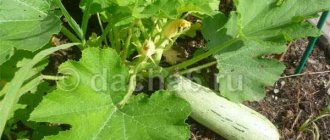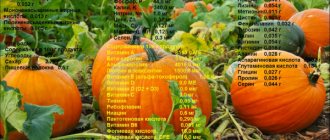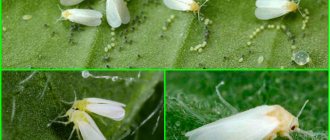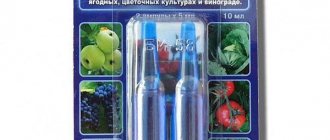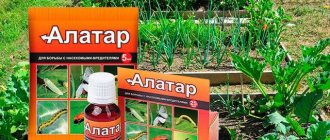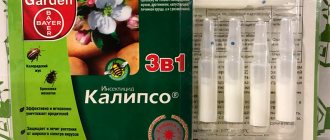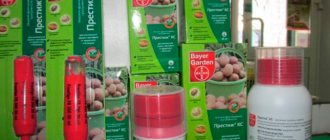Ammophos is one of the most effective phosphorus fertilizers, which is used in all regions of the country for pre-sowing and row-crop application, as well as as a mineral fertilizer for growing grain crops and root crops at all stages of the growing season.
Ammonium phosphate (ammophos) acts much faster than any of the superphosphates, since the active substances are contained in its composition in an easily digestible form. This property distinguishes this agrochemical from a number of other fertilizers of this class, and expands the possibilities of its use. Ammophos can be used not only as planned, in anticipation of its future effect on plants, but also urgently, when the first signs of phosphorus deficiency appear.
Release forms
Ammophos of any brand is available in the form of spherical granules that easily dissolve in water.
The size of the grains is from 1 to 4 mm, but in one batch the granules must be of the same size. Light gray or white coloring is acceptable.
The friability of ammophos of all brands is 100%. The granules are weakly hygroscopic, do not absorb moisture during storage, do not stick together, do not form lumps, and do not cake.
In retail sales, fertilizer is sold in polyethylene bags or soft containers.
Physical and mechanical characteristics
The drug has good product characteristics in the following parameters:
- The drug has a degree of hygroscopicity, in which the substance does not absorb moisture from the air during storage and transportation. This means that the fertilizer does not become damp, does not stick together, and does not lose flowability.
- The product dissolves in the aquatic environment, which significantly increases the possibilities of its use and methods of application to the soil. Fertilizer solutions are suitable for use in watering and drip irrigation.
- The granules are uniform in size and strength, and have the same shape. These qualities are especially important when applying fertilizer to the soil using a mechanized method, and allow the fertilizer to be distributed evenly over the area of the site.
- The preparation contains an optimal amount of moisture of about 1%, which ensures the strength of the granulometric composition and ensures the flowability of the product at all stages from loading to application to the soil.
The high concentration of active ingredients and the almost complete absence of ballast makes the use of ammophos very economically profitable. In the conditions of farms and agricultural enterprises, the costs of storage, transportation, and application of fertilizers to the soil are significantly reduced.
Important! Phosphorus does not move well in the soil. Phosphorus fertilizers should be applied as close as possible to the root system of plants.
Composition, formula and description
Ammophos is produced according to GOST 18918-85. The substance is monoammonium phosphate with an admixture of diammonium phosphate. Accordingly, they are presented in the chemical formula of the fertilizer: NH4H2PO4 + (NH4)2HPO4.
Each component includes both phosphorus and nitrogen. The total volume of phosphorus is 4 times greater than nitrogen, the share of the first is 45-52%, the second – 10-12%.
Gardeners should remember that ammophos does not contain potassium, which is also a basic element of plant nutrition. The product does not contain side salts, acids or other substances. The share of water does not exceed 1%.
All brands of ammophos are produced either without additives or supplemented with one of three microelements - copper, zinc or boron.
How stamps are obtained and produced
To isolate the substance, a reaction is caused between phosphoric acid and ammonia. As a result, the acid is neutralized with the precipitation of salts.
Due to this, most of the impurities are removed from ammophos, filtering them out at the end of the chemical process.
The second consequence of the reaction is a decrease in acidity to a pH level of 4-4.5. This indicator also preserves the finished product.
The filtered solution is evaporated, removing volatile substances. After this, the second stage of neutralization is carried out.
The cooled solution crystallizes, the manufacturer gives it the form of granules and dries it.
There are the following two brands of ammophos:
- grade “A” – contains 12% total nitrogen and 50-52% digestible phosphates;
- grade “B” – 10% total nitrogen, 44-46% digestible phosphates.
Orthophosphoric acid for the production of grade “A” product can be obtained in two ways. Either by treating the Khibiny apatite concentrate with inorganic acids, or by burning phosphorus to form phosphorus oxide and reacting the resulting substance with water.
Other substances containing at least 30% phosphates can also be used as feedstock.
The requirement for grade “B” raw materials is different - the total share of phosphates in it should be no more than 28%. Natural phosphorites from Kartau are most often used.
In this case, the acid is obtained only by extraction, treating with inorganic acids. The thermal method is not used.
Application
Ammophos is used in agriculture to supply plants with nitrogen and, first of all, phosphorus. It can be used both in open and closed ground, on all types of soils in any climatic zones of Russia.
Top dressing is suitable for all crops that are cultivated for the purpose of obtaining food, animal feed or technical raw materials. The fertilizer is approved for use on private farms.
Most soil types found in Russia are insufficiently supplied with phosphorus. Research in 2022 showed that 34% of the land used for growing garden, field and horticultural crops is saturated with the element at an average level, another 18% contains a low proportion, and 8% contains an extremely low proportion.
At the same time, the highest yield is observed when cultivated on soils with a high concentration of phosphates. Therefore, ammophos is used everywhere in the country.
The largest volume of products (75%) is supplied to the Central and Southern districts; the undisputed leader in ammophos consumption is the Krasnodar Territory.
This is due to the specificity of the soils in these regions, containing a high concentration of calcium carbonates. By reacting with them, phosphates form compounds that are inaccessible to plants. Ammophos saturates the soil with easily digestible forms of the macronutrient.
Fertilizer is applied before sowing or simultaneously with it, as well as during the growing season.
Fertilizing is most useful at the beginning of the season, when plants especially need nitrogen and phosphorus.
Since the proportion of nitrogen is small, ammophos can also be used after the formation of ovaries, when it is not recommended to give nitrogen-containing products.
For the same reason, the complex is optimally suited for arid regions, where, due to lack of precipitation, nitrogen remains in the soil longer and its deficiency occurs less frequently.
Ammophos: new knowledge about the popular fertilizer
It is known that on neutral and slightly alkaline soils, which include carbonate chernozem, meadow-forest carbonate soils, chestnut and gray soils, ammophos creates a more favorable phosphate regime compared to superphosphate. It is advisable to use it in arid zones, where much less nitrogen fertilizers are required than phosphorus ones. About why ammophos fits so well into the fertilizer system for various crops, in the article by the director of the All-Russian Research Institute of Agrochemistry named after D.N. Pryanishnikov, Academician of the Russian Academy of Sciences Viktor Sychev, provided by Kazphosphate LLP.
Photos from open sources
Why does phosphorus become a "minimal factor"?
In agriculture of the Russian Federation, the problem of phosphorus is acute, which is due to the insufficient natural supply of most soils with this element. Phosphorus is a strategic nutritional element for agricultural plants. Its deficiency during the formation of reproductive organs in other crops inhibits the development and delays the maturation of plants, causing a decrease in yield and deterioration in product quality.
As of January 1, 2019, out of 112 million hectares of surveyed agricultural land in Russia, more than 66.5 million hectares (62%) are characterized by very low, low and medium phosphorus content (less than 100 mg/kg of soil) (Fig. 1).
Rice. 1 — Soil areas of agricultural lands according to the content of available phosphorus as of January 1, 2019 (according to the agrochemical service of the Ministry of Agriculture of the Russian Federation)
Many years of experience in the use of phosphorus fertilizers show that the highest crop yields are achieved with an increased level of P2O5 content - 151-200 mg/kg of soil.
The problem of phosphorus is aggravated by the peculiarities of its cycle in nature, where there is a one-sided process of its alienation from the soil with crops. In this regard, D.N. Pryanishnikov (1924) emphasized that “the soil gradually but steadily loses its phosphorus (or at least its digestible part), and beyond a certain limit, phosphorus falls into the position of that “minimum factor” , which is most lacking to obtain a good harvest.”
An important reason for the deterioration of the phosphate regime of soils is also the reduction in the consumption of phosphorus fertilizers, which has sharply decreased in recent years. Low doses of fertilizer have a negative impact on the formation of agrocenosis productivity and soil fertility.
With an insufficient supply of phosphorus, not only crop yields decrease, but also the absorption of nitrogen and other nutrients by plants.
Ammophos: requirements and manufacturers
An effective type of phosphorus-containing fertilizer is ammophos - a highly concentrated complex nitrogen-phosphorus fertilizer, the total content of active substances in which reaches 64%.
Ammophos is used as a basic, pre-sowing and row fertilizer for various agricultural crops, in all soil and climatic zones, and also as a mineral fertilizer when growing grain crops and root crops at all stages of the growing season.
Due to the use of different types of raw materials (phosphorites, apatites) and different production technologies (mineral fertilizers, phosphoric acid), differences arise in their composition, properties, efficiency and environmental safety. However, there is a basis in the form of analytical data for identifying the fundamental differences and advantages of ammophos from the most common sources.
In modern economic conditions, the competitiveness of a fertilizer must be confirmed not only by statistically reliable information about its chemical composition and, including the concentration of the main active substances, but also the biological effectiveness of the fertilizer and its environmental safety.
Depending on the manufacturer, ammophos contains about 9-12% N and 39-52% P2O5. The number of granules measuring 1-5 mm is at least 90%.
Fertilizers from various manufacturers presented on the Russian market, including Acron PJSC, PhosAgro Group, UralChem Trading House LLC, MCC EuroChem JSC, Kazphosphate LLP, fully meet the requirements for these fertilizers.
On neutral and slightly alkaline soils (carbonate chernozem, meadow-forest carbonate soils, chestnut soils, gray soils), ammophos creates a more favorable phosphate regime compared to superphosphate. It is advisable to use it in arid zones, where much less nitrogen fertilizers are required than phosphorus ones. Ammophos is also widely used in protected soil conditions together with nitrogen and potassium fertilizers.
Numerous results of field experiments from various research institutions in the country have confirmed the high effectiveness of ammophos in increasing the productivity of agricultural crops. Its use in the initial period of plant growth promotes the development of a healthy root system, rapid formation of shoots and leaves, and increased resistance to drought and disease. The benefits of ammophos cannot be overestimated, since phosphorus starvation is very difficult for plants to tolerate.
For agriculture in the Russian Federation, ammophos is produced according to GOST 18918-85, TU 2186-670-00209438-01, by Kazphosphate LLP according to TU 649 PK 38777145 PK-01-2000. An analysis of the available technical documentation for ammophos from all ammophos manufacturers showed that the resulting product is characterized by high quality, and in terms of the content of heavy metals and radionuclides, it fully complies with the standards for the environmentally safe use of fertilizers.
What is ammophos?
The following brands of ammophos (N:P) are produced: Ammophos 10: 39; Ammophos 10:46; Ammophos 10:48; Ammophos 12:52; Ammophos A, premium grade; Ammophos-extra (embankment); Ammophos premium grade (mound).
Despite the distinctive ratio of components, any of the types of fertilizer has the following positive effects:
- uniform distribution on the soil surface;
- Can be used for main application and during sowing;
- harmless to seedlings;
- long-term storage of the substance (does not absorb moisture, does not cake, does not crumble);
- suitable for feeding plants on any type of soil;
- the yield increases several times and the quality of grown products improves;
- the ripening period is reduced by how many days;
- promotes abundant flowering, the formation of a larger number of ovaries without barren flowers;
- provides increased immunity, which helps neutralize the negative effects of drought and frost, as well as resist infectious and bacterial diseases;
- contributes to the strengthening and development of a strong root system of crops;
- helps to increase the shelf life of products;
Studies of the effectiveness of ammophos at the Prikumsk experimental station in the Stavropol Territory have shown that even if you abandon the main application of ammophos in the fall, and use it only when sowing, the yield of spring barley, corn for silage, and sunflower increases by 11-15%. The combined use of ammophos and ammonium nitrate provides an increase in barley grain yield on chernozem soil from 27.7 to 35.2 c/ha (an increase of 9.8 c/ha), i.e. by 27%, corn silage from 263 to 310 c/ha or 18%, sunflower by 17%.
Ammophos and soils
Ammophos from different manufacturers can be used with equal effectiveness on different types of soil, regardless of natural and climatic conditions. On neutral and slightly alkaline soils (carbonate chernozem, meadow-forest carbonate soils, chestnut soils, gray soils), ammophos creates a more favorable phosphate regime compared to superphosphate. The use of ammophos on soddy-podzolic and gray forest soils, including potato plantings, as the main fertilizer, has a great influence on the normalization of plant development. It is effective to use ammophos in combination with irrigated agriculture.
On soils with light mechanical composition, ammophos in the spring. Most often, ammophos is used in conditions and climatic zones where normal plant development does not require too much nitrogen, but at the same time, there is an urgent need for phosphorus. For example, in arid regions, ammophos is chosen for pre-sowing application, where it is recommended to apply fertilizers with a minimum amount of nitrogen. Ammophos has a particularly effective effect on soil fertility and the formation of plant productivity when combined with nitrogen fertilizers, for example, ammonium nitrate. Under these conditions, crop yields can increase by 20-40%.
A high effect from the use of ammophos is observed on soils with an alkaline and neutral environment. According to the Stavropol Research Institute of Agriculture, the inclusion of ammophos in the fertilizer system on chestnut soil contributed to an increase in crop yields by 76%.
The unique formula of ammophos allows it to be used even on saline soils.
The largest volumes of ammophos are supplied to the Southern and Central Federal Districts, the regions of which collectively purchase more than 75% of these products, while the largest consumer region in the Southern Federal District is the Krasnodar Territory (more than 21% of total consumption) (Fig. 2). The use of ammophos in the largest volume in the Southern Federal District is explained by the peculiarity of the soils, which have a high content of calcium carbonates, which, when interacting with soluble phosphorus compounds, form forms that are difficult for plants to reach. A lack of easily digestible phosphorus reduces the level of productivity of agrocenosis and limits the effect of nitrogen and potassium fertilizers. Therefore, despite the high gross reserves of this element, most agricultural crops are in need of priority application of phosphorus fertilizers. Slightly less ammophos is supplied to the Rostov region - 21.5%, Stavropol Territory - 12.7%, Volgograd region - 3.3%.
Rice. 2 — Receipt of ammophos to the regions of the Russian Federation (% of the total volume of fertilizer)
Ammophos and diversification
Ammophos is an effective fertilizer for use under rapeseed, spring grains, legumes (peas, soybeans), and perennial grasses. The dose of ammophos applied before sowing these crops depends on the degree of availability of mobile phosphorus in the arable soil layer and is usually 60 - 90 kg/ha a.i.
In addition, phosphates, having a high aftereffect, contribute to a significant increase in the yield of the subsequent crop - winter wheat.
Rice is a periodically flooded crop, and ammophos, as a fertilizer containing nitrogen in ammonia form, is most suitable for improving the qualitative and quantitative indicators of the yield of this crop. In the rice farms of the Krasnodar Territory, high equivalent efficiency of ammophos produced by MCC Eurochem JSC, Acron PJSC, Kazphosphate LLP was revealed, the average increase in grain yield was 12-17 c/ha.
Ammophos is very effective, especially in conditions of excessive soil moisture when cultivating grain, industrial, and silage crops.
The results of a generalization of field studies of the Geonetwork of experiments with VNIIA fertilizers showed that in the Stavropol Territory, the use of ammophos for pre-sowing cultivation, even in the absence of its main application in the fall, significantly increases the productivity of spring barley, corn for silage, and sunflower. Pre-sowing application of ammophos for spring barley made it possible to increase the yield on chernozem soil from 25.7 to 30.2 c/ha, that is, by 17% (an increase of 4.3 c/ha), and when using ammophos together with ammonium nitrate to 34. 2 c/ha, that is, by 33% (an increase of 8.5 c/ha).
Ammophos from various manufacturing companies with N:P contents of 10/39, 10/46, 12/52 showed greater economic efficiency on chestnut soils. If the barley grain yield without the use of fertilizers was 12.9 c/ha, then with the application of ammophos and ammonium nitrate it increased by 76% and amounted to 22.7 c/ha (an increase of 9.8 c/ha). In the last three years, similar results were obtained in the production conditions of the region, and they used ammophos produced by Eurochem-BMU OJSC, Acron PJSC and Kazphosphate LLP. There were no significant differences in crop productivity depending on the ammophos manufacturer.
When cultivating row crops in the Krasnodar region, the highest increases in yield are observed with a balanced diet, which was ensured by the use of ammophos in combination with ammonium nitrate at a dose of N60P60. Optimization of the ratio of nitrogen and phosphorus is also necessary when using ammophos for corn cultivated for green mass.
Almost identical results of yield accounting in one region were obtained both when using ammophos from Acron PJSC and Kazphosphate LLP. The yield of corn for silage with pre-sowing application of ammophos increased from 280 to 295 c/ha, and when combined with ammonium nitrate to 323 c/ha, thus, the increase in green mass yield was 5.3% (12 c/ha) and 15 .4% (43 c/ha), respectively.
Ammophos also gave good results when applied to sunflower: the yield increased by 14% (2.8 c/ha), and together with ammonium nitrate by 19% (3.7 c/ha).
Ammophos and productivity
The use of ammophos produced by PhosAgro OJSC, Acron PJSC, MCC Eurochem JSC, Kazphosphate LLP is widespread in the Central Federal District, Southern Federal District and North Caucasus Federal District. Ammophos from these manufacturing companies showed greater agroeconomic efficiency on the chernozem soils of the Krasnodar Territory; the grain yield of winter wheat without the use of fertilizers was 23.2 c/ha, but with the addition of ammophos and ammonium nitrate it increased by 78% and amounted to 41.3 c/ha (the increase was 18.1 c/ha). Some difference in the yield of winter wheat when using ammophos from different fertilizer manufacturers was mainly due to the varietal characteristics of the crop, the weather conditions of the region and some other technology factors.
The results of studies of the effectiveness of ammophos from different manufacturing companies with different contents of basic nutrients showed that the products presented on the Russian market provide the expected effect; no significant difference in the formation of the yield of winter wheat on chernozem soils of the Belgorod region was identified (Table 1).
Table 1. Effect of fertilizers on the productivity of winter wheat
Ammophos is considered one of the best phosphorus fertilizers , which can be used during any growing season, regardless of soil type. When applied in a row at a dose of 0.4-0.5 c/ha (in physical weight), ammophos gives a high economic effect, especially for spring grains and leguminous crops (peas, spring barley, oats, soybeans). For each kg (a.v.) of ammophos, the yield increase is: for grain crops - 2.7-5.9 c/ha, spring barley 8.3-9.4 c/ha, sunflower - 5.2-6 .0 c/ha, soybean grains 2.0-3.1 c/ha.
Ammophos can be applied to crops with some reserve, but not as much as superphosphate. Ammophos is absorbed by plants much faster, and an excess of this substance can cause much more harm to plants than its deficiency.
Ammophos from various manufacturing companies represented in Russian agriculture, based on extensive testing in production conditions, can be used effectively and environmentally safely in agricultural production and personal subsidiary plots. According to the available technical documentation, the quality of ammophos in terms of the content of heavy metals and radionuclides meets the requirements established by SanPiN 2.6.1.2523 (NRB-99/2009), GN 2.1.7.2041, GN 2.1.7.2042 and can be used according to scientifically based recommendations without restrictions.
Previous post
The pilot regions of the Republic of Kazakhstan - Almaty, Zhambyl and Turkestan - received 1 billion tenge each for the implementation of the cooperation chain “From Field to Counter”
Next entry
The World Bank will allocate US$500 million to implement the Sustainable Livestock Development Program
Impact on crops
Phosphorus nutrition is a prerequisite for the development of a strong root system, abundant flowering, good fruit weight gain, and the accumulation of sugars in their pulp.
Phosphorus is also necessary for increasing green mass, which is especially important for annual crops.
The substance is responsible for regulating metabolic processes, and in case of its deficiency, the roots stop absorbing nitrogen from the soil. As a result, plant growth slows down.
Shrubs and trees need phosphorus for the ripening of young shoots. If the greenery does not have time to become woody before the frost arrives, all of the current year's growth will die.
This will affect the harvest in the second summer after freezing, since the established fruit buds will suffer.
Nitrogen in ammophos is in ammonia form, therefore it is weakly washed out of the soil during precipitation and irrigation. This allows the element to be supplied to plants whose agricultural technology requires significant soil moisture.
For rice grown in flooded areas, this is the best available nitrogen supplement. In order to saturate with nitrogen, the fertilizer is suitable for grain, silage, industrial crops, and annual grasses.
Properties of ammophos
Fertilizer has a number of positive properties. The ammophos formula allows you to increase productivity and increase plant resistance to diseases.
The use of the substance allows you to strengthen the root system of plants and improve the quality of the resulting fruits. After fertilizing, plants more easily adapt to any negative external conditions, while their yield and shelf life increase.
Beneficial properties for soil and plants
Ammophos increases soil fertility, enriching it with phosphorus compounds available to the roots, and nitrogen in a sedentary form. Fertilizer also reduces the acidity of the substrate.
Top dressing is not suitable for highly acidified soils.
On neutral soils, the use of ammophos is acceptable, but alkaline soils, in which plants do not absorb nutrition well, can be corrected with its help.
Superphosphate on slightly acidic soils supplies plants with phosphorus worse than ammonium phosphate.
Fertilizing with ammophos has a beneficial effect on plants in a number of ways:
- increases productivity;
- reduces ripening time by several days;
- promotes abundant flowering and the formation of a large number of ovaries;
- ensures the development of a powerful root system;
- increases the shelf life of fruits;
- stimulates metabolism and growth of new tissues;
- strengthens immunity, resistance to diseases, frost, drought;
- seedlings and seedlings take root better;
- grains are less prone to lodging and accumulate more proteins;
- in vegetable crops the proportion of fiber increases;
- sunflower and nuts are more saturated with vegetable fats.
How does Ammophos act on plants?
Feeding cultivated plants with Ammophos affects them as follows:
- Strengthens the root system.
- Helps increase protein in grain crops, healthy vegetable fats in seeds and nuts, fiber in vegetables.
- Increases immunity, which makes plants more resistant to diseases and low temperatures.
- Increases the quality and quantity of the harvest.
- Increases the survival rate of young seedlings after planting or replanting and acquire vitality.
- Grain crops become more resistant to lodging.
Difference from Ammofosk
Sometimes these two fertilizers are confused due to similar names.
But they differ in composition and are recommended for use in different cases.
| Ammofoska | Ammophos |
| Contains three essential macronutrients: nitrogen, phosphorus and potassium | No potassium |
| The amount of nitrogen is the same in both fertilizers | |
| The proportion of phosphorus is much less – 15%. | 50-52% phosphates |
| Nitrogen in both substances is in ammonium form. | |
| The composition includes sulfur, the share of which is 14%. | |
| Available in two forms: granules and powder | Only in granule form |
Similar complex fertilizers
Ammophos is not the only multicomponent fertilizer. There are several types of fertilizers that are similar in composition and effect on plants:
- azofoska - also contains potassium, nitrogen and phosphorus in the formula, these are the main components, but including a larger amount of sulfur, it differs only in the percentage of elements;
- ammophoska - potassium has been added to the three main components, it is additionally allowed for use on closed soils, the composition does not contain chloride and sodium components;
- nitrophoska - in addition to the three components, potassium is added, and nitrogen is used exclusively in nitrate format, which is easily washed out of the soil. Due to the additional content of the ammonium form of nitrogen, the period of activity of the fertilizer is extended;
- nitroammophos - despite the similar name, it is slightly different from the previous fertilizer. It is presented as a two-component fertilizer, which is obtained by neutralizing a mixture of phosphoric and nitric acid with ammonia. It does not contain potassium, but at the same time it is able to saturate vegetable, fruit and berry crops with the optimal amount of nutrients.
Unlike the listed fertilizers, ammophos has the advantage of a long shelf life and convenient use. To get the maximum result from application, it is best to apply ammophos in mid-spring and in a dosage not exceeding the recommended one.
If you find an error, please select a piece of text and press Ctrl+Enter
Advantages and disadvantages
The conditionally negative qualities of ammophos include its ability to increase soil acidity and a low nitrogen content.
But they cannot be considered as clear disadvantages: acidification is useful on alkaline soils, and the low concentration of nitrogen allows the use of fertilizing until August.
A more significant disadvantage is the lack of potassium in the composition.
The drug has many more advantages:
- Plants quickly absorb phosphorus from ammophos. This allows it to be used to eliminate macronutrient deficiency.
- The drug is safe for seeds, even if the granules are near them. Other nitrogen fertilizers can damage them with ammonia.
- The use of ammophos does not provoke the accumulation of nitrates in fruits.
- The fertilizer does not contain chlorine, therefore it is suitable for chlorophobic crops.
- Ammophos is more effective than a mixture of nitrogen and phosphorus fertilizing, since it ensures a more uniform distribution of useful elements in the soil and their greater availability to the roots.
- The absence of ballast substances means that the product is completely spent on plant nutrition.
- The fertilizer can be used on any soil.
- The drug is convenient to apply: dry ammophos does not form dust during operation, the granules easily dissolve in water.
- Granules embedded in the soil dissolve gradually, useful substances are delivered to the roots in portions, with each watering.
- Long shelf life.
Instructions for use
Ammophos can be fed to plants in open ground, in a greenhouse, in pots or boxes.
The greatest effect of fertilizer was recorded on plantings of potatoes, beets and grapes. Suitable for cucumbers, tomatoes, peppers, cabbage, legumes and melons.
The effect of the drug on plant productivity is enhanced when applied together with nitrogen fertilizers.
For example, if you supplement fertilizing with ammonium nitrate, on average, the yield increases by 20-40%.
Fertilizer is given in several ways:
- Basic entry. Used to improve the quality of the substrate. Ammophos in dry form is embedded in the ground in autumn or spring. If spring fertilizing is carried out before the snow melts, the bed is not dug up - melting precipitation will draw the fertilizer into the soil. If the procedures are done in April, it is best to water the area with a solution of the drug.
- When sowing. When applied to a hole, the product can provide plantings with nitrogen and phosphorus for the entire growing season.
- During the season. Used as a routine phosphorus fertilizing or if plants suffer from a lack of the element. In this case, watering is carried out with ammophos solution.
When applied to the soil in autumn or spring for each square. meter consumed:
- 20-30 g – for areas with vegetable crops (tomatoes, cucumbers, peppers);
- 15-30 g – for berry bushes and fruit trees;
- 15-25 g – for potato or beet planting;
- 15-20 g – for ornamental plants and lawn grasses.
When applied simultaneously with planting or sowing, 2-3 g of product are consumed per 1 meter of row.
For irrigation, a 10% ammophos solution is most often used. Pour 1 kg of granules into 10 liters of hot but not boiling water (40-60°C). Mix the solution thoroughly and leave for 10 minutes. During this time, a precipitate will form that needs to be filtered.
Solid particles can be filled with water again - the sediment will remain for about 5 liters of solution. For individual crops, the recommended solution concentration may be different.
During the season, fertilizing is carried out three times. Fertilizer cannot be used in August because it contains nitrogen.
237 When do we add ammophos?
What is fertilized with ammophoska
Phosphorus fertilizer is ideal for all types of plants. It is recommended to add it to the soil when growing the following crops:
- Grape. When using fertilizer, this crop is saturated with all the necessary nutrients. Fertilizer is applied in the spring in several stages, after diluting ammophos with water (400 grams per bucket of water). Two weeks after the first feeding, another one is carried out, diluting 150 grams of fertilizer in a bucket of water.
- Potato. Phosphorus fertilizer helps increase potato yields. To do this, granules are added directly into the wells at the rate of ½ teaspoon per well.
- Beet. The use of fertilizing allows you to saturate the root crops with sugars, which is valuable when growing sugar beets. Fertilizing is carried out at the rate of 5 g 1 per m2.
Fertilizing is also carried out when growing grain crops, sunflowers, flowers, fruit and other types of plants.
Application to different soil types
Top dressing works well on any soil. But, depending on the type of soil, the action and effectiveness of the fertilizer differs.
Ordinary, steppe or carbonate chernozems
These soils are found in the southern regions. Under conditions of high temperatures during the growing season, plants absorb nitrogen in ammonium form better than nitrate nitrogen.
Therefore, ammophos is one of the most suitable options for fertilizing with the element. Since such soils are nutritious, the proportion of nitrogen in the fertilizer is sufficient; it does not need to be applied separately.
Soddy-podzolic soils, chernozems of the forest-steppe and forest-meadow zones
A fairly rich substrate that does not require large amounts of fertilizer.
Ammophos will be useful as a top dressing for potatoes, grapes, flax, buckwheat, sugar beets, and grain crops.
Saline, sandy soils, loams
Such soils are poor in phosphorus in forms available to plants, so the use of ammophos in this case is a necessary measure.
Not all fertilizers are effective on saline soil, but ammonium phosphate has shown greater effectiveness.
On light sandy soils, it is advisable to fertilize in the spring.
Serozems, chestnut soil
Fertilizer significantly increases the productivity of plantings subject to high-quality irrigation. According to research from the Stavropol Research Institute of Agriculture, ammophos on chestnut soil gives an increase in yields of up to 76%.
Behavior in soil
In the soil solution, monoammonium phosphate, which occupies the main share of the substance, breaks down into ammonium ion and a number of phosphate ions.
Entering into exchange reactions with cations in the soil, the ammonium ion is adsorbed, taking a form accessible to the plant roots. Absorbed ammonium is inactive, so it does not leave the soil with water.
Phosphate ions form phosphorus compounds over time, which are different in different soil types.
Part of the phosphorus is absorbed by colloidal chemical means by minerals and soil compounds remaining from the original rock.
In this form, the macroelement is readily available to plants. Also, the roots easily absorb the precipitated salts of orthophosphoric acid.
Recommendations for applying fertilizer in summer cottages
The choice of fertilizing method depends on the characteristics of the soil in a particular area:
- Loose and aerobic soil is not fertilized in the fall, only in the spring. Otherwise, the nutrients may go too deep during the winter.
- In depleted poor soils, ammophos should be applied at the upper limit of application rates. In this case, it is necessary to do two main feedings per year: in the fall, dry granules are scattered over the garden bed and covered by digging; in the spring, the area is first dug up, and then watered with liquid fertilizer.
- For heavy soils, the dose of the product is increased by 1.5 times. It is advisable to fertilize using the irrigation method, combining ammophos with nitrogen-containing preparations.
The fertilizer is most suitable for soils rich in potassium. In other cases, ammophos should be supplemented with potassium fertilizer, otherwise a deficiency will soon arise.
In the greenhouse
Soils in shelter are depleted much faster than in the open air. Therefore, fertilize indoor soil regularly and monitor the condition of the plants in order to promptly prevent deficiency.
Ammophos is one of the best complex fertilizers for restoring the substrate in greenhouses. Be sure to supplement it with nitrogen and potassium supplements.
Large doses are recommended on protected ground. When applying for digging in autumn or spring for vegetable and ornamental crops, use 40-50 g per 1 m2.
Production
This fertilizer has been officially used in our country for more than 30 years (GOST 18918-85). The production technology of ammophos has been perfected over decades, therefore, unlike imported analogues, the domestic agrochemical always has a predictable effect on plants. This allows it to be applied to crops with some reserve, but not as much as superphosphate. Ammophos is absorbed by plants much faster, and an excess of this substance can cause much more harm to plants than its deficiency.
To buy mineral fertilizer for use in your summer cottage, you must carefully choose the manufacturer. Predictable results will be brought by domestic and post-Soviet factories (Russia, Kazakhstan, Uzbekistan). High-quality products usually contain at least 45% digestible phosphates. The price of ammophos is quite low, which makes it possible to use this mineral fertilizer in any required volumes, without a noticeable increase in production costs and rise in price of products.
Instructions for use for different crops
There are specific features of using fertilizer for different crops.
For potatoes
Ammophos is used to increase productivity and stimulate the processes of starch accumulation in potato tubers.
It is optimal to apply fertilizer to this crop during planting. Pour 2 g (1 tablespoon) of granules into each well.
For flowers
Ammophos is a very effective fertilizer for ornamental shrubs. Sprinkle 15-25 g of dry substance under each plant in the spring. It is advisable to do this when planting seedlings.
For subsequent fertilizing during the growing season, prepare a solution - 5 g of product per 10 liters of water.
Apply fertilizer in the fall at a rate of 20 g per 1 m2 to an area with flowers or lawn grasses.
To speed up flowering, give the plants liquid fertilizer every week from the beginning of June.
To prepare the solution, dilute 2-3 tablespoons of granules in 10 liters of water. During the season, granules of 5 g per 1 square can be added to the lawn.
Other types of crops
Ammophos is suitable for feeding many crops. The substance does not have the same effect on different plants, and not all of them are equally sensitive to phosphorus deficiency.
Metabolic processes also differ, for example, feeding grapes and beets with ammophos not only promotes the growth of fruit mass, but also removes nitrates from it.
Accordingly, the timing and recommendations for using fertilizer are also different:
- To feed spring grain crops, apply ammophos in the fall or along with sowing, distributing 2.5-3 kg of granules per hundred square meters of field.
- For winter crops, the application rate is 1 kg per hundred square meters, apply during sowing or in early spring.
- When planting vegetable seedlings, it is useful to add 0.5-1 g of fertilizer to each hole. From the moment of transplantation until the formation of ovaries, water the plants with a solution of standard concentration.
- It is recommended to water cucumber seedlings with fertilizer before planting. To do this, dissolve 2.5 tablespoons of granules in 3 liters of water.
- In the spring, in a bed intended for onions, it is recommended to distribute 30 g of the drug on each square of area.
- Feed beets using the row method when planting. Add 5 g of dry product per 1 linear meter.
- Give grapes fertilizer in the spring in the form of a solution (400 g per bucket of water) or in dry form, scattering 10 g of granules per square meter. meter After half a month, apply foliar feeding with a less concentrated solution (150 g per bucket). When planting grapes, place 30 g of granules in each hole.
- In autumn or spring, apply ammophos to the tree trunks of fruit trees. One mature tree requires 100 g of granules, and a young tree needs 50 g. In June and the first half of July, water with a solution of the product.
- Before sowing peas, beans and other legumes, add 600-900 g per square meter into the soil.
Terms of use
Ammophos is applied to the soil for the first time in the fall. First, it is used for digging up soil, and then under trees and bushes, followed by embedding into the ground. Next time, fertilizers must be applied in the spring. Some people feed plants at the very beginning of the season. In melting snow, the product dissolves faster, plunging into the substrate.
In summer, ammonium phosphate is used at least 3 times per season. By August, feeding is stopped: nitrogenous preparations cause the growth of green mass of plants and young shoots, which may die in winter.
Before using the product, you must carefully study the instructions for use.
Ammophos can be applied to the soil either in a dry state or in the form of an aqueous solution. Dry fertilizer is evenly distributed over the entire area of the site, followed by plowing. You can pour the product into the wells by mixing it with the substrate.
It is advisable to apply ammophos to the soil in a dry state.
Some find it more convenient to work with fertilizer diluted in water :
- Add 500 g of ammophos to 5 liters of hot liquid.
- Stir the product and wait for a precipitate to form.
- The liquid part is drained. It is used for root or foliar feeding.
- Add 2.5 liters of hot water to the precipitate twice, repeating the manipulations.
Sometimes it is necessary to use several types of fertilizers. Typically, gardeners and gardeners mix preparations to save time. But first you should find out whether ammophos can be combined with one or another product.
Fertilizer containing phosphorus can be combined with substances such as nitrophoska, ammonium nitrate, potassium salt, urea and sodium chloride. The working solution can be applied after treating the soil with superphosphate and sodium, calcium or potassium nitrate. The drug is incompatible with manure, chicken droppings, ash and lime.
In addition to the fertilizer itself, Ammophos is recommended to be used with additional preparations
The working solution is poured under the root of the plant . For large areas, it is used in drip irrigation using a separate container connected to the system. Experts advise introducing a solution filtered from sediment 15-20 minutes after watering. Fertilizing is applied within 25-35 minutes.
Scope of application of ammophos
Phosphorus fertilizer is used for many plant crops. The instructions may indicate species for which this drug is contraindicated. Most often, ammophosphate is used for the following plants :
- Potato. The drug increases the yield of this crop. Granular fertilizer (0.5 tsp) is poured directly into the hole.
The drug Ammophos will help increase potato yields - Beet. When growing it, it is important to saturate the root crops with sugars. Per square meter you will need 5 g of ammophos.
- Grape. With such feeding, the perennial vine receives adequate nutrition. A phosphorus-containing product is applied several times in the spring. 400 g of the drug is diluted in one bucket of water. The second feeding, which requires only 150 g, is done two weeks after the first.
The fertilizer will also be useful for grain crops . It is added to the soils on which flowers, sunflowers and fruit bushes grow. Ammophos has a beneficial effect on the quality of the lawn. Per square meter of land you need to take 20-25 g of the product and sprinkle it on the grass after watering.
Compatibility with other fertilizers
Potassium salt and potassium sulfate combine well with ammophos as sources of potassium. You can make a mixture with both substances, but you cannot store it.
For nitrogen fertilizing use:
- urea;
- ammonium nitrate;
- ammonium sulfate.
Only ammonium sulfate can be mixed with ammophos in advance; with other nitrogen-containing substances, prepare the mixture immediately before adding it to the soil.
Ammophos is poorly compatible with alkaline fertilizers (lime, ash) and organic matter (cow manure and chicken droppings).
Conclusion
Ammophos is an indispensable product for farmers. The benefits of additions have been proven in practice many times. What do the reviews left by gardeners indicate?
There are practically no negative aspects if you use fertilizer in the correct dosage, taking into account the nuances of use and dilution.
Sources
- https://glav-dacha.ru/udobrenie-ammofos/
- https://udobreniya.pro/ammofos-vnesenie-podkormki-na-ogorode/
- https://stroy-podskazka.ru/udobreniya/ammofos-sostav-i-primenenie/
- https://FB.ru/article/317664/ammofos-formula-osobennosti-primeneniya-sostav-i-svoystva
- https://udobryashkin.ru/promyshlennye/ammofos
- https://proogorodik.ru/ammofos.html
- https://vrediteli24.ru/sad-i-ogorod/ammofos.html
- https://pochva.net/industrial/ammofos.html
- https://amtsibir.ru/ammfos/
- https://udobrenium.ru/ispolzovanie/udobrenie-ammofos
- https://FertileLand.ru/mineralnye-udobreniya/ammofos/
- https://VseUdobreniya.com/promyshlennye/ammofos
2 318
Analogs
The closest analogue of ammophos is the MAF fertilizer. This substance is pure monoammonium phosphate, which occupies the main share in ammophos. MAF has a high phosphorus content - up to 61%.
Complex fertilizers, which, like ammophos, contain the three main macroelements, differ significantly from it in the proportions of active substances.
Because of this, each drug has its own specific application and cannot serve as a full replacement for others.
- Nitroammophos. The proportions of phosphorus and nitrogen in the substance are 20-25%.
- Nitroammophoska. Contains 16% nitrogen, phosphorus and potassium.
- Nitrophoska. The product contains 10% phosphorus and 15% nitrogen and potassium.
- Ammofoska. Includes 15% phosphorus and potassium, 14% sulfur and 12% nitrogen.
A mixture of 2.5 kg of superphosphate and 350 g of ammonium nitrate can replace 1 kg of ammophos. These fertilizers can be mixed, but the prepared solution should be used immediately.
The important role of phosphorus in plant life
Without phosphorus, the process of formation of the root system is very slow and delayed. The plant stops developing fully because it cannot absorb nutrients from the soil. In addition, the lack of this element during the formation of reproductive organs leads to impaired growth of the crop. The process of fruit ripening slows down, causing the yield to drop sharply. In addition, phosphorus promotes the rapid and successful absorption of nitrogen-containing substances.
Experts have concluded that 1 kg of Ammophos fertilizer replaces up to 3 kg of superphosphate in combination with 400 g of ammonium nitrate. The effectiveness of the nitrogen-phosphorus mixture exceeds these feedings by 3 times.
Security measures
Ammophos is a caustic substance that is harmful upon contact with mucous membranes and skin; working with it requires compliance with a number of safety measures:
- Protect your hands with gloves, and your respiratory tract and oral mucous membranes with a Petal-type respirator.
- Wear closed clothing with long sleeves for work.
- Upon completion of the procedure, wash your hands thoroughly with running water and soap.
- If the drug gets into your eyes, wash them immediately with soap and water.
- If the product gets into the stomach, you need to drink a large amount of water, induce vomiting, and seek help from a doctor.
Storage rules and duration
For retail trade, the shelf life of ammophos is 24 months from the date of manufacture.
The drug should be kept in a dry place, inaccessible to children and animals, in a tightly closed container or in an airtight package.
Metal containers should not be used to store the substance. Permissible temperature limits are from 0 to +30°C.
Complex fertilizers: Nitroammofoska and Ammophos. Advantages and disadvantages

